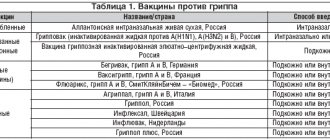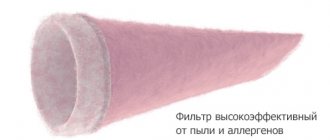Our ears, like other human organs, are susceptible to various diseases and pathologies. The penetration of pathogenic microorganisms into them can cause ear inflammation in adults and children.
An acute inflammatory process in the ear is called acute otitis media. Acute otitis media is divided into several subtypes, based on the location and nature of the inflammation. Today's hero of our article is acute purulent otitis media.
Suppurative otitis media is an infectious inflammation of the middle ear. Because of this, purulent masses form and accumulate in the tympanic cavity.
As medical statistics show, acute otitis media is a common diagnosis: any adult and child are susceptible to it. This is the most common form of otitis media.
Inflammation usually develops against the background of colds and other diseases of the nasopharynx. But if you can sit out a cold at home, then otitis in a child and an adult should be treated exclusively by an ENT doctor. Incorrect treatment of acute otitis, and especially its absence, can result in chronic inflammation, provoke hearing problems and lead to more dangerous consequences, for example, meningitis.
Causes
Acute purulent inflammation of the middle ear is a consequence of the penetration of pathogenic microflora into it and its activation against the background of a decrease in the body’s own defenses.
Often the infection enters the middle part of the hearing organ through the inflamed auditory tube connecting the nasopharynx to the ear. With sinusitis, sinusitis, proliferation of adenoid vegetations, tonsillitis and other ENT diagnoses, pathogenic microflora enters the auditory tube (for example, with sharp blowing of the nose), it becomes inflamed - eustachitis develops. If treatment was ignored or was ineffective, pathogenic organisms enter the ear through the auditory tube. This is the first variant of infection.
The second way is through a rupture in the eardrum or damage in the mastoid process (the area of the temporal bone associated with the middle ear). Otitis of this etiology is called traumatic.
A rarer route is through the blood, when during infectious diseases, for example, scarlet fever or measles, pathogenic flora spreads through the bloodstream and enters the hearing organ.
The disease develops due to decreased immunity. Factors provoking this may be:
- problems with the endocrine system;
- lack of vitamins;
- bad habits;
- diseases of the ENT organs;
- diabetes;
- frequent entry of water into the ear (local immunity decreases).
Causes and development of purulent inflammation
Among all patients of an otolaryngologist, people with otitis media make up a large percentage. In many ways, the tendency to inflammatory diseases of the hearing organ often has a hereditary predisposition. Children are more susceptible to otitis due to the anatomical features of the development of the children's hearing organ.
If we consider purulent otitis media, in most cases it is a complication of acute inflammation that occurs as a result of improper or poor-quality treatment.
Purulent otitis media can also be caused by infection entering the organ of hearing. Among the main pathogenic agents are pneumococci, staphylococci, Proteus, Klebsiella, Pseudomonia, and in some cases fungi. Often, pathogens enter the ear with mucus from the nasopharynx, through the blood during an infectious disease (measles, rubella, influenza), or externally when the hearing organ is injured.
The development of the disease is often facilitated by various immunodeficiency conditions, endocrine disorders and improper treatment with antibiotics.
Symptoms of purulent otitis media
A distinctive sign of the disease, which distinguishes it from non-purulent otitis media in adults and children, is discharge of purulent exudate from the ear. This sign is not always present. Suppuration is possible only when pus ruptures the eardrum. If the eardrum has not ruptured, the purulent accumulations cannot leave their location, which can lead to possible complications.
Another sign of suppurative otitis media is ear pain. It can be either tolerable and non-intense, or simply unbearable.
During the period of inflammation, body temperature may rise, although this is not a mandatory sign.
Patients also note hearing loss, ear congestion and headaches.
It is more difficult to understand that a child has developed otitis media, since children cannot clearly explain what and how it hurts. In infants, diagnosis is even more difficult. But based on his behavior, one can suspect ear inflammation: the baby is capricious, has become whiny, and refuses milk.
The disease occurs in stages: inflammation goes through several stages. These stages of otitis differ from each other in symptoms.
Symptoms of the disease
Acute purulent otitis occurs when pathogenic agents penetrate the ear canal. Inflammation is accompanied at first by a weak and then a strong throbbing pain, radiating to the temple, head or jaw. The ear becomes clogged and there is tinnitus. With the development of inflammation, body temperature rises, swelling of the ear and the appearance of purulent exudate. Then the membrane ruptures and purulent discharge occurs. With proper and timely treatment, the symptoms of the disease decrease.
The course of chronic otitis has a less pronounced pain syndrome, suppuration is long-lasting and recurrent. The eardrum does not repair itself, which can cause temporary or permanent hearing loss.
Stages of otitis media
There are three stages of acute otitis: pre-perforative, perforative and reparative. But this does not mean that a person will necessarily go through all these stages. With good immunity and timely visits to an otolaryngologist, it is possible to stop inflammation in the initial phase.
The first stage is the so-called acute catarrhal otitis media (acute non-purulent otitis media). Catarrhal otitis in children and adults occurs with intense pain in the ear, which increases towards night. At this moment, it’s as if something is pulsating or shooting in the ear; the pain can radiate to the teeth or the temporal part of the head. This condition is very difficult to tolerate. The ear tissues swell, the eardrum and auditory ossicles become less mobile, which certainly affects hearing acuity. During this same period, noise in the ear appears. Temperatures may rise to fairly high levels. The patient feels lethargic, tired, and loses his appetite. Further development of catarrhal otitis in a child and an adult patient can be prevented if in time, when the first signs of inflammation are detected, you consult an otolaryngologist. If treatment of acute otitis in children and adults was not carried out on time, the second stage occurs.
The perforated stage is when the pus accumulated in the tympanic cavity breaks through the eardrum, forming a hole in it - a perforation. It is at this stage that suppuration from the ear canal is observed. At the same time, the patient feels noticeable relief: the pain subsides, the body temperature drops, and the patient’s general condition improves. Suppuration can last up to five to seven days. If a natural rupture of the eardrum does not occur, the otolaryngologist will do it forcibly.
By the way, it is not pus that may accumulate in the tympanic cavity, but serous fluid. In this case, a person is faced with acute serous otitis. But this is a topic for a separate article.
The reparative stage is the final stage in the development of the disease. This is the so-called healing stage. The suppuration stops, the restoration of the eardrum begins, and hearing gradually returns to normal.
Typically, the disease, provided that all three stages are completed, lasts two to three weeks.
Discharge from the ear, or otorrhea
Allergy
Fungus
16642 June 24
IMPORTANT!
The information in this section cannot be used for self-diagnosis and self-treatment.
In case of pain or other exacerbation of the disease, diagnostic tests should be prescribed only by the attending physician. To make a diagnosis and properly prescribe treatment, you should contact your doctor. Discharge from the ear: causes of occurrence, what diseases cause it, diagnosis and treatment methods.
Definition
Earwax is a physiological secretion from the ear canal and protects the hearing aid from pathogenic bacteria. It contains lard, fatty acids and fat-like substances, as well as various mineral salts. Normally, a person produces 15–20 mg of earwax per month, which has the appearance of a sticky yellow-brown mass. All other discharges are considered pathological and indicate ear diseases.
Types of ear discharge
The discharge may be clear, white, light or dark yellow, or greenish (if there is pus). If blood enters the ear secretion, the discharge becomes reddish or brownish in color.
The consistency of the discharge may be watery, have a cheesy or flaky texture, and sometimes crusting may form.
An unpleasant smell of discharge due to the presence of pus in it can serve as a diagnostic sign.
What diseases and conditions cause discharge from the ear ? Wax plugs
. Excessive work of the sulfur glands leads to the formation of sulfur plug. Most often, this problem occurs in patients with diabetes mellitus, metabolic syndrome, and high cholesterol levels in the blood. The formation of cerumen plugs is provoked by increased viscosity of sulfur, dry skin, the entry of small foreign particles into the ear (for example, industrial dust), as well as excessive hair growth in the ear canal. Often, wax plugs are observed in people involved in water sports, using hearing aids, and miniature headphones.
With improper hygiene measures and independent attempts to remove excess earwax, there is a risk of pushing it deeper into the ear canal, thereby causing the formation of a plug.
Clinical signs of cerumen plug are pain and congestion in the ear, tinnitus, especially painful when the cerumen comes into contact with the eardrum, sometimes headache, dizziness, and nausea.
Mucopurulent and purulent discharge is a symptom of inflammation of the outer and middle ear. For inflammation of the outer ear (otitis externa)
the pathological process can develop in the auricle and external auditory canal (up to the eardrum). Most often, otitis externa occurs due to infection of the ear by bacteria and microscopic fungi. Its first signs are, as a rule, pain in the ear, itching, and, less often, hearing loss and a feeling of fullness. Mucopurulent discharge appears only with a widespread form of the inflammatory process throughout the entire ear canal.
The source of purulent discharge in the outer ear can also be a boil
located in the concha or ear canal.
With otitis media of the middle ear
, mucopurulent and purulent discharge becomes the result of infection of the sterile effusion from the inflamed tissues of the ear. Since the chamber of the middle ear is closed by the eardrum, purulent discharge can appear in the outer ear only after a hole has formed in it. This is preceded by severe pain in the ear, fever, decreased hearing, and in children - overexcitement, sometimes vomiting.
For mastoiditis
(inflammatory lesion of the mastoid process of the temporal bone), purulent discharge from the ear also appears. As a rule, this disease develops as a complication of otitis media and is accompanied by fever, pain and swelling in the mastoid area behind the ear.
Transparent bloody or purulent discharge appears with acute infectious myringitis
(inflammation of the eardrum), which may be of fungal or bacterial origin. Blisters filled with blood form on the surface of the eardrum, which then burst. In addition to the discharge, ear congestion is observed.
Transparent, colorless or slightly pinkish discharge from the ear can be a consequence of liquorrhea - the leakage of cerebrospinal fluid. It enters the auricle during fractures of the skull bones
(usually temporal) due to injury.
In addition, clear watery discharge sometimes accompanies allergic otitis
, which is also characterized by other symptoms - itching, ear congestion.
Unchanged blood appears from the ear, usually after injury and rupture of the eardrum
.
Such injury can occur after acoustic and mechanical shocks, as well as as a result of improper hygiene procedures. A ruptured eardrum is always accompanied by severe pain.
The appearance of bloody-purulent discharge from the ear is one of the indications of the presence of a polyp on the eardrum or the mucous membrane of the middle ear
. A polyp is a growth of tissue in response to irritation. The appearance of a polyp is preceded by active inflammation of the middle ear. In addition, polyps can be a consequence of myringitis, otitis externa, or malignant neoplasms. By perforating the eardrum, the polyp can protrude into the external auditory canal, leading to hearing loss.
Minor discharge, sometimes forming crusts and having an unpleasant odor, is characteristic of cholesteatoma.
– a tumor-like formation formed from the epidermis of the ear canal.
In most cases, cholesteatoma complicates chronic purulent epitympanitis
and is formed from layers of keratinized epidermis, water, proteins, fats and cholesterol. The formation of cholesteatoma is accompanied by feelings of heaviness and fullness in the ear, and headache. If left untreated, it can gradually invade the mastoid process and cranial cavity.
For otomycosis
loose cheesy discharge is observed. The main culprits of the disease are molds (usually localized in the outer ear) and yeast-like fungi (usually found in the middle ear). Clinical signs of otitis externa in these cases include pain and a colored, cheesy-necrotic discharge from the ear. Patients complain of tinnitus and dizziness.
A discharge that contains large, greasy flakes, sometimes mixed with pus, is characteristic of seborrheic ear dermatitis.
. The disease can affect not only the ear, but also the scalp. Clinical signs include severe itching, swelling of the ear, peeling skin and weeping wounds.
Transparent discharge mixed with blood (bloody discharge) indicates bullous, or influenza, otitis media.
. Bullae (bubbles of fluid) appear on the surface of the ear canal and eardrum. When they burst, the liquid with ichor flows through the ear canal into the auricle.
Which doctors should I contact for ear discharge?
In most cases, ear diseases are characterized by a clear clinical picture, which is based on pain. Such patients are treated by an otolaryngologist.
In the presence of a traumatic brain injury, which is accompanied by liquorrhea, urgent hospitalization is necessary. Otherwise, an unfavorable prognosis is possible.
Discharge from the ear is not always accompanied by pain, in particular with allergic otitis media, which is treated by, and.
Diagnosis and examinations for ear discharge
If the formation of a cerumen plug is suspected, the doctor performs an otoscopy, during which an accumulation of sulfur in the ear canal is detected. Diagnosis of external and otitis media is carried out on the basis of patient complaints, otoscopy, and palpation of the parotid area. It is recommended to culture the discharge from the ear to determine the causative agent of the disease and its sensitivity to antibiotics. Audiometric examination is possible.
Chronic suppurative otitis media
Chronic inflammation is always preceded by acute inflammation. The course of the disease is not accompanied by such striking symptoms as the acute form, so many do not immediately seek medical help, thereby wasting time, and the disease continues to progress.
The main sign of chronic inflammation is constant suppuration from the ear canal. In this case, there may be no pain, or it will be mild, and the body temperature will be normal.
The disease is divided into mesotympanitis and epitympanitis. With mesotympanitis, inflammation covers the mucous membrane of the tympanic cavity without affecting the bone structures. With epitympanitis, destructive processes occur in bone tissue.
In order not to bring your condition to chronic inflammation, which will then have to be difficult and long to treat, it is important to contact an otolaryngologist at the acute stage of the disease when the slightest signs of the disease appear.
Complications of acute purulent otitis
If the disease is treated late or incorrectly, acute inflammation can become chronic.
Chronic purulent otitis is the most common complication of the acute form. There are two forms of chronic suppurative otitis media – mesotympanitis and epitympanitis. The disease can also lead to:
- labyrinthitis - inflammation of the inner ear;
- to the spread of purulent inflammation to the membranes of the brain (meningitis, brain abscess);
- sepsis;
- paresis of the facial nerve, when the face becomes asymmetrical and the affected side loses its mobility;
- mastoiditis – inflammation of the mastoid process of the temporal bone;
- hearing loss or complete hearing loss.
Diagnosis and treatment of the disease
In the diagnosis of purulent otitis, it is important to determine the degree of damage to the hearing organ and the presence of various complications of the disease. To do this, endoscopy of the organ, examination of the hearing analyzer, CT or MRI of the skull are performed, and a study of the level of hearing is carried out.
At the first stage, it is important to determine the causative agent of the infection (a bacteriological analysis of purulent exudate is carried out) and prescribe adequate antibiotic therapy. It is also recommended to take anesthetics to relieve pain. To remove accumulated pus, the eardrum is punctured.
It is recommended to rinse the ear with antibiotic solutions and instill them. The course of treatment is complemented by physiotherapy: UHF, laser therapy, ultraviolet radiation. If the examination reveals bone destruction, disorders of the vestibular apparatus, paresis of the facial nerve and other disorders, then surgical treatment is performed. During the operation, pus and altered tissues are removed; in especially severe cases, reconstruction of the damaged areas is necessary.
The prognosis for treatment of the disease depends on the stage of the disease and the presence of complications. It is important to start therapy as early as possible, in this case it will be possible to preserve hearing. When the first symptoms of purulent otitis appear, you must make an appointment for a fee with an otolaryngologist at a medical clinic. The centers' specialists treat purulent otitis media at any stage of the pathological process. The clinics are equipped with the necessary equipment, and our specialists have extensive experience in treating complex and severe inflammation of the hearing organ. You can make an appointment with an otolaryngologist for a fee by calling: 8 (812) 322-93-07, 8 (812) 611-08-26.
Diagnostics
For an experienced otolaryngologist, diagnosing the disease is not difficult. When making a diagnosis, the ENT doctor relies on the patient’s complaints and the results of otoscopy (examination of the hearing organ). The patient may be referred for a number of laboratory tests that will confirm or refute the presence of inflammation. To assess the degree of hearing impairment, audiometry or tuning fork testing is performed. To assess the condition of the components of the middle ear, tympanometry is performed. In severe cases, the patient is sent for X-ray, CT, MRI.
Treatment of acute purulent otitis
Treatment of otitis media in adults, and especially children, should be carried out under the supervision of an ENT doctor. It should be borne in mind that the treatment regimen will vary depending on the current phase of the disease.
So at the initial stage, until the eardrum ruptures, the doctor prescribes ear drops (Otinum, Otipax, etc.), which have an anti-inflammatory and analgesic effect. There is no point in using local antibiotics in this case, since the problem is behind the membrane, and if there is no hole in it, the medicine will not reach its target. Therefore, the patient is prescribed general antibacterial drugs.
As soon as the eardrum ruptures, the above drops cannot be used, as they can harm the labyrinth of the inner ear. In this case, antibacterial ear drops, such as Otofa or Normax, are prescribed.
To relieve tissue swelling, you can use antihistamines (Zodak, Zyrtec, etc.) and vasoconstrictor nasal drops (relieves swelling of the auditory tube).
When the temperature rises, it is recommended to use antipyretic drugs (for example, Nurofen or Paracetamol).
Any drug, especially an antibacterial one, should be prescribed exclusively by a doctor and taken strictly taking into account the dosage and frequency of administration.
Don't forget about physical therapy. Physiotherapy helps relieve inflammation and speed up recovery.
As therapeutic procedures, the otorhinolaryngologist performs toileting of the middle and outer ear, placing medicinal micro-compresses, and rinsing the tympanic cavity with medicinal solutions.
If the purulent masses were unable to rupture the eardrum on their own, the otolaryngologist “helps” by making an incision in it and releasing the purulent accumulations outward.
Ear inflammation in a child: how to prevent complications
Otitis media is one of the most common diseases in childhood. According to international statistics, 98% of children experience ear inflammation at least once, and 60% experience the disease twice. What is effective prevention and how otitis media is treated, said otorhinolaryngologist of the Morozov Children's Hospital, Candidate of Medical Sciences, holder of the “Moscow Doctor” status Alexander Mikhailovich Ivanenko.
Why does otitis media occur?
Depending on the location of the inflammatory process, otitis media can be external, middle or internal. Otitis externa is caused by microbes, most often manifested by damage to the skin of the ear canal and boils in the area of the auricle. Internal otitis in most cases occurs with an advanced form of otitis media.
Acute otitis media is an acute inflammation of the mucous membrane of the middle ear cavity. Develops against the background of respiratory infections. Infection of the ear occurs through the auditory tube, when mucus from the nasopharynx enters the middle ear and viruses, bacteria, and fungal flora freely penetrate from the nasopharynx through the mouth of the auditory tube into the tympanic cavity.
Due to anatomical features, the smaller the child, the shorter and wider the auditory tube connecting the ear cavity with the nasopharynx. Therefore, in an infant who spends most of his time lying down, and in a young child who does not know how to clean his nose, mucus may leak at any time. In adolescent children, the auditory tube is a tortuous narrow tube, so the spread of infection from the nasopharynx to the middle ear is less possible.
Adenoid vegetations also contribute to the development of ear inflammation. This is the proliferation of the nasopharyngeal tonsil, which is the main focus of bacterial infection in the nasopharynx.
How does the disease manifest?
The main symptom of otitis media is ear pain. Children under one year old, as a rule, refuse to eat, because sucking movements cause pain. Babies often touch their ear, rub it, and cry. You can suspect otitis media by pressing on the tragus of the child's auricle.
The key method for diagnosing otitis media is otoscopy - an examination by a doctor of the external auditory canal and eardrum using a special instrument.
How to treat otitis?
If the inflammatory process is at the initial stage, outpatient treatment is carried out. Therapy is selected by a pediatrician or otolaryngologist depending on the child’s condition. Vasoconstrictor nasal drops must be used.
If medical assistance is not provided in a timely manner, the inflammatory process develops into acute catarrhal otitis media, and then into acute purulent otitis media, characterized by the appearance of purulent discharge from the ear. In some cases, if the outflow of contents is inadequate or absent, the child undergoes paracentesis in the hospital - an incision of the eardrum. The intervention is performed under anesthesia. Then medical conservative treatment continues.
What prevention measures are most effective?
There is an opinion among many parents that otitis media can be prevented by “covering the ear with cotton wool on the street” or “putting several hats on the child.” Such recommendations will not protect against otitis media.
Due to the fact that infection of the ear occurs through the auditory tube, which communicates with the nasopharynx, it is necessary to carefully care for the nasal cavity if the child has a runny nose. Otherwise, mucus flows from the nasopharynx into the middle ear, which leads to an inflammatory process in the ear.
If the nasopharyngeal tonsil grows excessively, it is recommended to remove it.
Physiotherapy for acute purulent otitis media
An important stage in the treatment of the disease, which enhances the effect of drug therapy and accelerates the recovery process, are physiotherapeutic procedures.
For acute purulent otitis, the following types of physiotherapy are effective:
- infrared laser therapy (reduces inflammation and relieves swelling of tissues);
- vibroacoustic therapy (improves blood and lymph flow, providing a good therapeutic effect for inflammation of the middle ear);
- ultraviolet irradiation (has a bactericidal effect);
- ultrasonic medicinal irrigation (has an anti-inflammatory effect);
- photodynamic therapy (helps relieve inflammation);
- ultrasound therapy (promotes deeper penetration of medicinal ointment, relieving inflammation and swelling of tissues);
- infrared laser exposure (stops the inflammatory process).
Which procedures should be used and how many sessions will be needed is determined by the ENT doctor, based on the patient’s condition.
Treatment
Treatment of acute purulent otitis media is aimed at evacuation of purulent discharge and sanitization of the tympanic cavity. The affected ear is washed with antiseptic solutions, and antibacterial drugs approved for use in perforated otitis are used to combat pathogenic microflora. To evacuate purulent discharge through the auditory tube, it is necessary to thoroughly sanitize the nasopharynx - rinsing the nose with saline solutions, gargling, and using decongestants to restore normal nasal breathing. Symptomatic (antiviral, antibacterial) therapy of the underlying disease is also carried out.
As the temperature response normalizes, it is necessary to include highly effective physiotherapeutic techniques in the treatment - rinsing the nasal cavity with ultrasound, exposure to low-intensity laser radiation on the mucous membrane of the nasal cavity and ear on the affected side.
It is important to remember that treatment of acute purulent otitis media, especially in children, should be started as soon as possible, since the development of intracranial complications in this disease is a very common reason for hospitalization and surgical treatment in pediatric practice.
At the ENT CLINIC in Chertanovo you will be able to undergo high-quality endoscopic diagnosis of the underlying disease and, if necessary, do additional examination (tympanometry, ultrasound examination of the paranasal sinuses). Based on the data obtained during diagnosis, the doctor will be able to prescribe a course of conservative physiotherapeutic treatment - rinsing the nasal and throat mucosa using the CAVITAR device (USOL therapy), exposure to low-intensity laser radiation using the LAST-ENT device. These techniques are safe, non-invasive and highly effective modern methods of treatment, which make it possible to localize and eliminate the purulent process in a short time and lead to recovery and complete restoration of auditory function, which is extremely important for a small child and his further socialization.
When the first symptoms of inflammation of the middle ear appear, especially in children, you should immediately see a doctor and begin the recommended treatment. This will help avoid serious complications and speed up the recovery process! Take care of yourself and the health of your loved ones!
Prevention
There are no specific preventive measures to avoid suppurative otitis media. To reduce your risk of getting sick, strengthen your immune system and promptly treat any ENT infection you encounter. An important point: treatment should not only be timely, but of high quality: no self-medication, only competent assistance from an otolaryngologist. There is no need to start the disease. At an early stage, any disease is much easier to treat: in many cases, the accumulation of purulent masses in the middle ear could be easily avoided by contacting an ENT doctor in time.
If you or your loved ones are faced with hearing problems, do not waste time: make an appointment by calling +7 (495) 642-45-25 and come.
We will definitely help you!
Symptoms of otitis media in children
Most children with acute otitis media will complain of ear pain. If the child is still small and cannot speak, long, aching crying or the child’s refusal to breastfeed may indicate otitis media. Other symptoms may include:
- Irritability, moodiness
- “forced” position (if the pain is on one side, the child can put his hand to his ear or try to lie on the sore ear)
- Lethargy, weakness
- sleep disorders
- fever
- decreased or lack of appetite
- vomit
Because many cases of otitis media are caused by a viral infection, other symptoms associated with the infection, such as a runny nose, watery eyes, or cough, may often be present.
Still have questions?
Get an online consultation with leading ENT doctors in St. Petersburg!
A professional and experienced pediatrician will answer your questions.
Medical care for a child without leaving home at a convenient time.
sign up for a consultation
A Skype consultation lasts 45 minutes.










